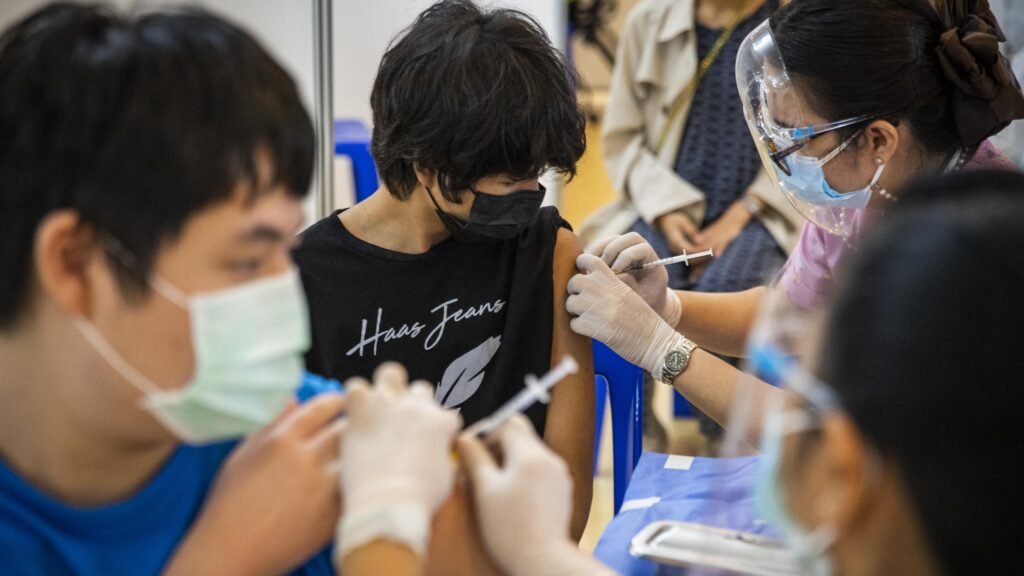The FDA has requested Moderna and Pfizer-BioNTech to expand the age range of boys and young men at risk for a rare side effect related to heart inflammation following Covid-19 vaccination. This move comes as part of an ongoing effort to ensure transparency and safety in vaccine administration.
Recent studies have highlighted cases of myocarditis and pericarditis, both rare inflammatory conditions affecting the heart, particularly in young men post-vaccination. The CDC has noted that these reactions typically occur within a week after the second dose of the mRNA vaccines. While most cases have been mild, with symptoms like chest pain, the FDA has urged the vaccine manufacturers to update their safety information to reflect a wider age range of susceptibility, specifically ages 16-25.
Research has shown that the immune response triggered by the vaccines can lead to myocarditis and pericarditis, characterized by symptoms like fatigue, shortness of breath, and chest pain. Despite these risks, the benefits of Covid-19 vaccination still outweigh the potential side effects, as highlighted by the CDC advisory panel in 2021.
Studies have compared the risk of myocarditis from the vaccines to the risk of developing the condition after a Covid-19 infection. The data suggests that the incidence of myocarditis is significantly higher in Covid-19 patients compared to vaccinated individuals, emphasizing the importance of vaccination in preventing severe illness and complications.
Experts like cardiologist Steven Nissen have emphasized the importance of vaccination in preventing the spread of Covid-19, citing the higher risk of death from the disease itself compared to vaccine-related side effects. Vaccination rates have been instrumental in reducing the occurrence of myocarditis cases post-vaccination, especially with the implementation of booster doses.
In light of ongoing discussions around vaccine safety and efficacy, the FDA has taken steps to address concerns raised by health officials and vaccine critics. A recent Senate hearing focused on myocarditis and other adverse events associated with Covid-19 vaccines, highlighting the need for continued monitoring and transparency in vaccine distribution.
Overall, the FDA’s request for updated safety information from vaccine manufacturers underscores the agency’s commitment to ensuring the safety and effectiveness of Covid-19 vaccines. By staying informed and following guidelines from health authorities, individuals can make informed decisions about vaccination to protect themselves and their communities. The COVID-19 pandemic has brought about significant changes in the way we live our lives, from the way we work to the way we socialize. One of the most noticeable changes has been the increase in remote work and the use of video conferencing tools to stay connected with colleagues, friends, and family members.
Video conferencing tools like Zoom, Microsoft Teams, and Google Meet have become indispensable in the new normal, allowing people to meet virtually and collaborate on projects without having to be in the same physical location. This has not only helped businesses stay operational during lockdowns and restrictions but has also allowed people to stay connected with loved ones despite physical distancing measures.
One of the key benefits of video conferencing tools is the ability to see and interact with others in real-time, which helps to foster a sense of connection and camaraderie that can be lacking in traditional phone calls or emails. This face-to-face interaction can help to maintain relationships and boost morale, especially during times of isolation and uncertainty.
Another advantage of video conferencing tools is the ability to share screens and collaborate on documents and projects in real-time. This can streamline workflows and improve productivity, as team members can work together seamlessly even when they are miles apart. Additionally, video conferencing tools often come with features like chat functions, breakout rooms, and virtual backgrounds, which can enhance the meeting experience and make it more engaging and interactive.
Despite the many benefits of video conferencing tools, there are also some challenges that come with their widespread use. One of the most common issues is video call fatigue, which occurs when people spend too much time in virtual meetings and feel drained by the constant screen time and lack of physical interaction. To combat this, it is important for organizations to set boundaries around meeting times and encourage employees to take breaks and step away from their screens throughout the day.
Security and privacy concerns are also top of mind for many people using video conferencing tools, as there have been reports of hackers infiltrating meetings and sharing inappropriate content. To mitigate these risks, it is important to use secure passwords, enable waiting rooms for meetings, and only share meeting links with trusted participants.
Overall, video conferencing tools have become an essential part of our daily lives, allowing us to stay connected and collaborate with others in a virtual environment. While there are challenges to navigate, the benefits of these tools far outweigh the drawbacks, making them a valuable resource for both personal and professional use in the age of COVID-19.


